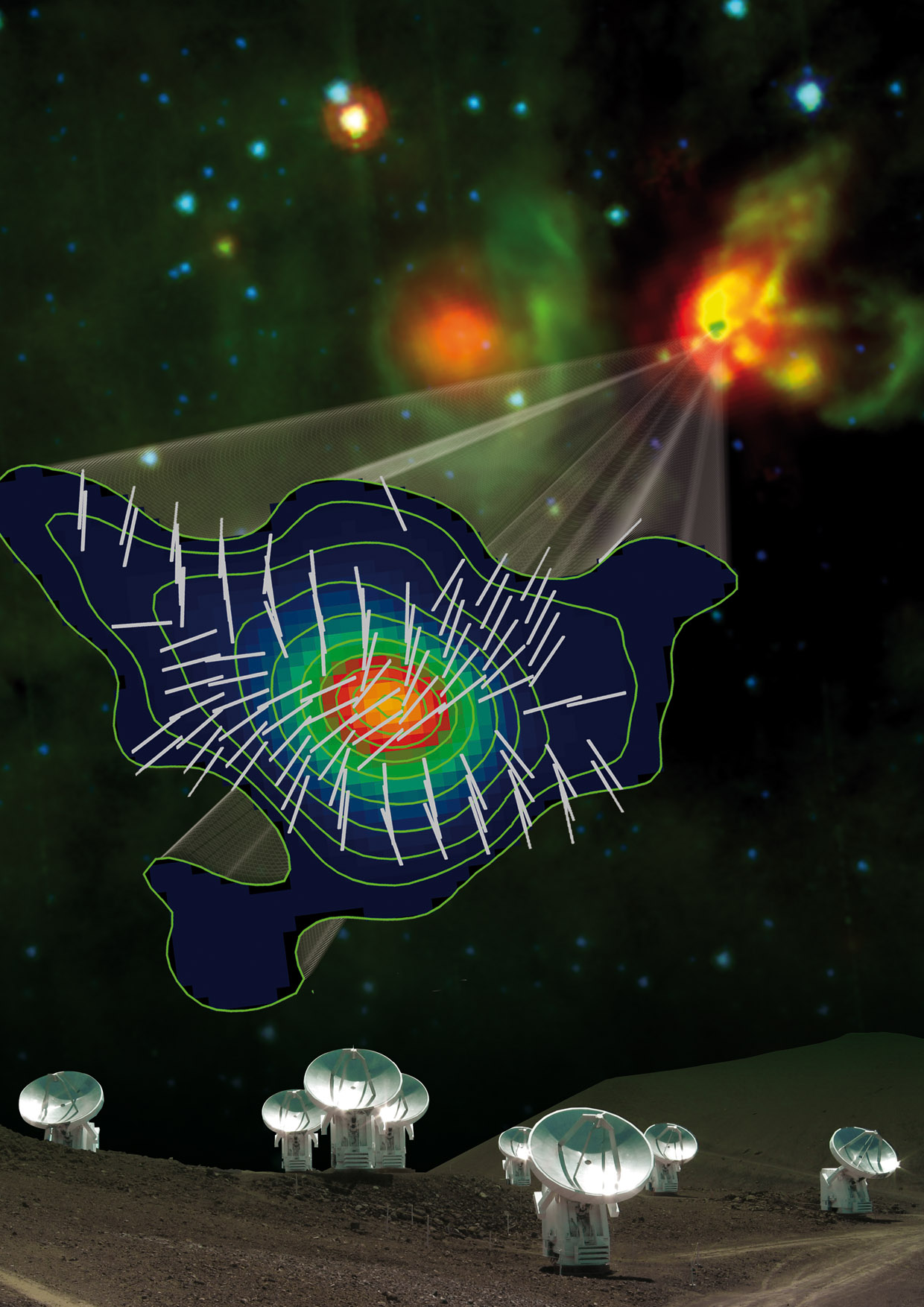My Research Interests
My main research interests include CMB foregrounds, magnetic fields in star formation, measuring the magnetic field strength via UV polarimetry, extragalactic dust via Supernova Type Ia , and dust dynamics in magnetized plasma.
Magnetic Fields in Star Formation via Dust Polarimetry

The formation of low-mass stars is expected to begin from molecular clouds, evolving to dense cores, protostellar disks, and stars. Magnetic fields are believed to play important roles in these processes. Many instruments with powerful polarimetric capabilities (e.g., SOFIA, BlastPol, Planck, SMA, ALMA, etc.) allow us to map magnetic fields from the large scales of molecular clouds to the small scales of disks. In addition, computational simulations of dust polarimetry is essential to reconstruct realistic structure of magnetic fields. However, previous simulations do not treat grain alignment adequately, due to the lack of a quantitative theory of grain alignment. Such a predictive theory of grain alignment is now available.
Predictive Theory of Radiative Torque Grain Alignment
Observations of starlight polarization indicate that interstellar grains are non-spherical and aligned with the magnetic field. The problem of how dust grains become aligned with the magnetic field is a longstanding problem in astrophysics. Despite significant efforts over the last 60 years, a predictive theory of grain alignment was not available until recent years. Inspired by a popular toy of kids--pinwheel, in Lazarian and Hoang (2007), we realized that a beam of photons would also exert a net torque on a helical grain, the same as a flow of gas exerting a torque on the pinwheel because photons carry intrinsic momentum. With a simple toy model of helical grain, we derived analytical formulas of radiative torques induced by a radiation beam, which reproduce successfully functional forms of radiative torques computed with discrete dipole approximation and induce the similar grain alignment Hoang and Lazarian (2008) . Using the analytical model for experimenting grain alignment in different conditions, my works (Hoang and Lazarian 2009a and Hoang and Lazarian 2009b) identified the basic features of radiative alignment, which are confirmed by numerous observations to date.
Ab-initio Numerical Modeling Dust Polarization
To directly test the predictions, extensive ab-initio numerical modeling of dust polarization by radiatively aligned grains have been conducted for a variety of environments, including starless cores, zodiacal cloud, cometary coma (Hoang and Lazarian 2014), and reflection nebula IC 63 (Hoang, Lazarian, and Andersson 2015).